Email sales@AllianceChemical.com for 24/7 Expert Support
-
512-365-6838
-
Ethylene Glycol Inhibited ACS Grade
Category : Glycols
$20.85
Liquid error (snippets/product-blocks line 100): divided by 0
Off
Unit price
/
Shipping Notice: Possible Hazmat Fees
💡 Smart Shipping Tip: Quart & Liter Sizes Often Avoid Hazmat Fees
This size may be classified as hazmat and can incur additional carrier fees. See shipping guide
- ✅ Good news: 1 Quart containers qualify as "Limited Quantity" and bypass hazmat rules
- 💡 Pro tip: Order multiple 1 Quart containers to avoid hazmat fees entirely
- 💰 Hazmat fees can get expensive - especially for larger containers (carrier charges, not our markup)
- 🚚 Ground shipping only - no expedited options for sizes over 1 Qt/1L
Required by 49 CFR § 173.150 for chemical containers larger than 1 quart. Actual fees shown at checkout. View our complete shipping guide →
✅ Great Choice! No Hazmat Fees
1 Quart containers qualify as "Limited Quantity" and avoid hazmat shipping fees.
- 🚀 Faster shipping: Eligible for expedited shipping options including air transport
- 💰 No hazmat fees: Ships as "Limited Quantity" per DOT regulations
- 📦 Convenient size: Perfect for testing or smaller applications
- ♻️ Smart choice: Order multiple quarts to get the volume you need without hazmat charges
Exempted under 49 CFR § 173.150 Limited Quantity provisions for containers ≤1 liter/quart. Learn more in our shipping guide →
Quantity
Size:
Variation:
-
$20.85Delivery every$19.81
-
$27.06Delivery every$25.71
-
$36.29Delivery every$34.48
-
$50.58Delivery every$48.05
-
$40.07Delivery every$38.07
-
$61.05Delivery every$58.00
-
$99.55Delivery every$94.57
-
$3,028.78Delivery every$2,877.34
-
$152.74Delivery every$145.10
-
$580.18Delivery every$551.17
-
$4,118.31Delivery every$3,912.39
-
$373.52Delivery every$354.84
-
$1,044.84Delivery every$992.60
-
$3,320.60Delivery every$3,154.57
-
$3,824.31Delivery every$3,633.09
$20.85
Liquid error (snippets/product-sticky-blocks line 69): divided by 0
Off
Unit price
/
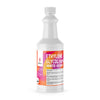
Ethylene Glycol Inhibited ACS Grade
$20.85
Liquid error (snippets/sticky-product line 56): divided by 0
Off
Unit price
/
Size:
Variation:
-
$20.85Delivery every$19.81
-
$27.06Delivery every$25.71
-
$36.29Delivery every$34.48
-
$50.58Delivery every$48.05
-
$40.07Delivery every$38.07
-
$61.05Delivery every$58.00
-
$99.55Delivery every$94.57
-
$3,028.78Delivery every$2,877.34
-
$152.74Delivery every$145.10
-
$580.18Delivery every$551.17
-
$4,118.31Delivery every$3,912.39
-
$373.52Delivery every$354.84
-
$1,044.84Delivery every$992.60
-
$3,320.60Delivery every$3,154.57
-
$3,824.31Delivery every$3,633.09
Ask a question
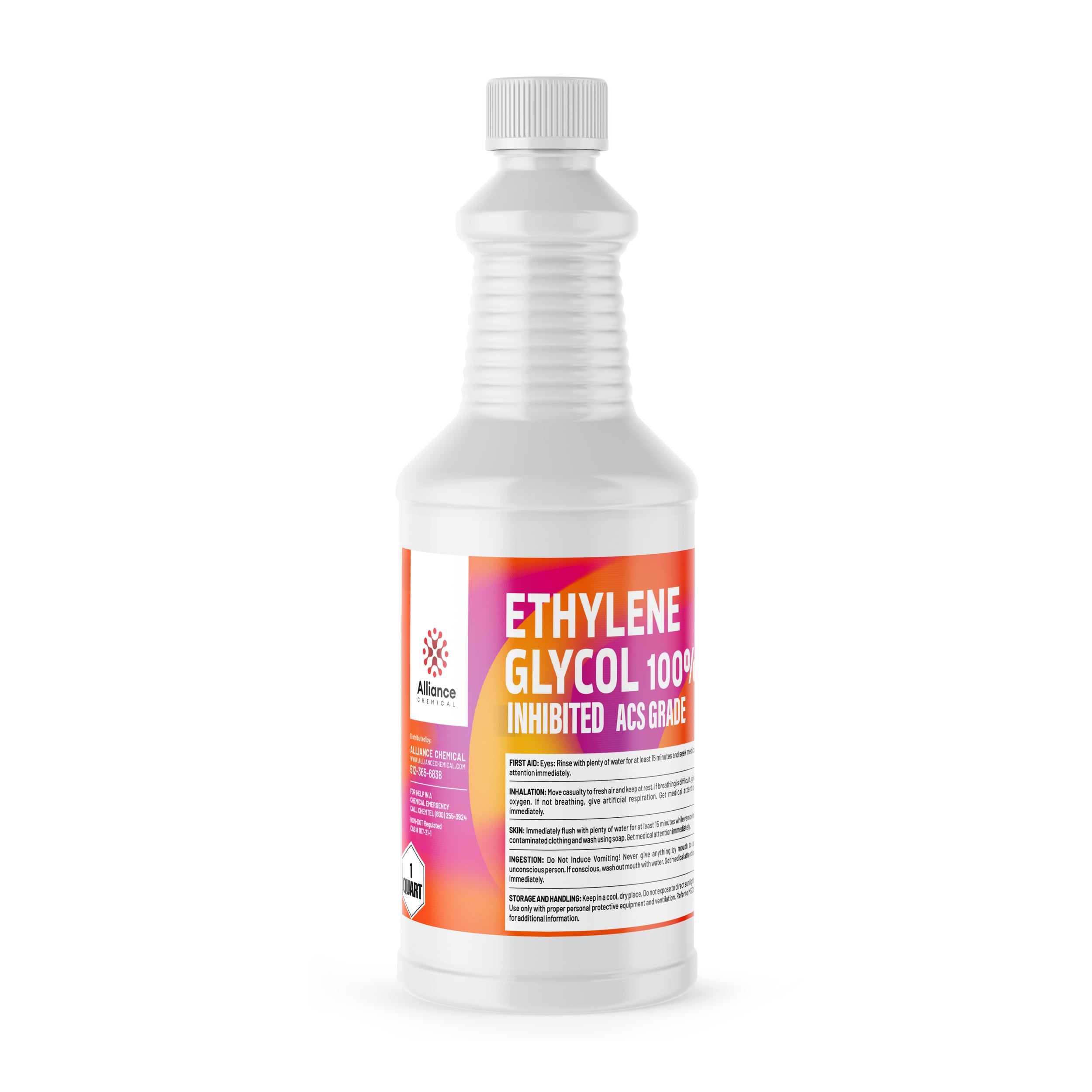
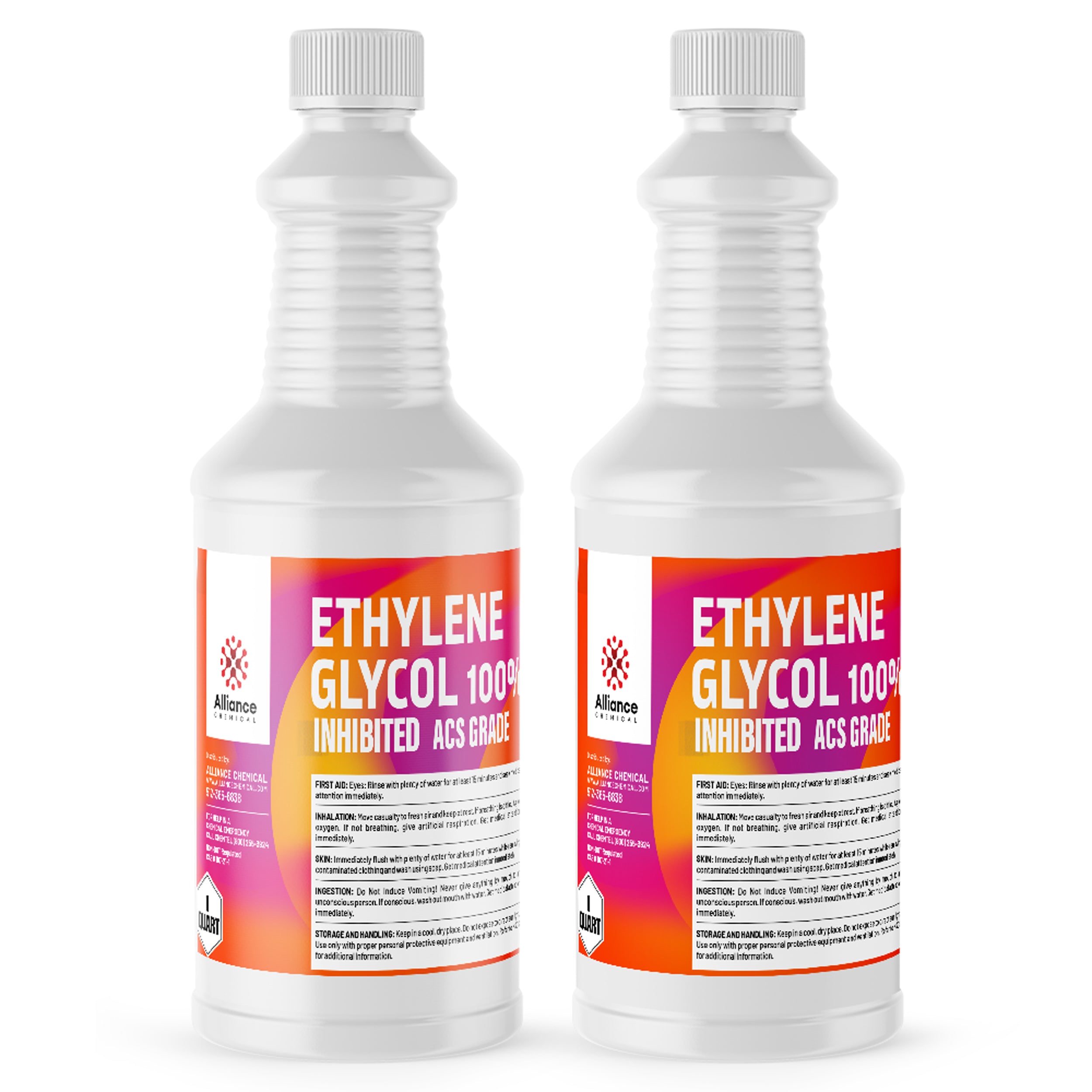
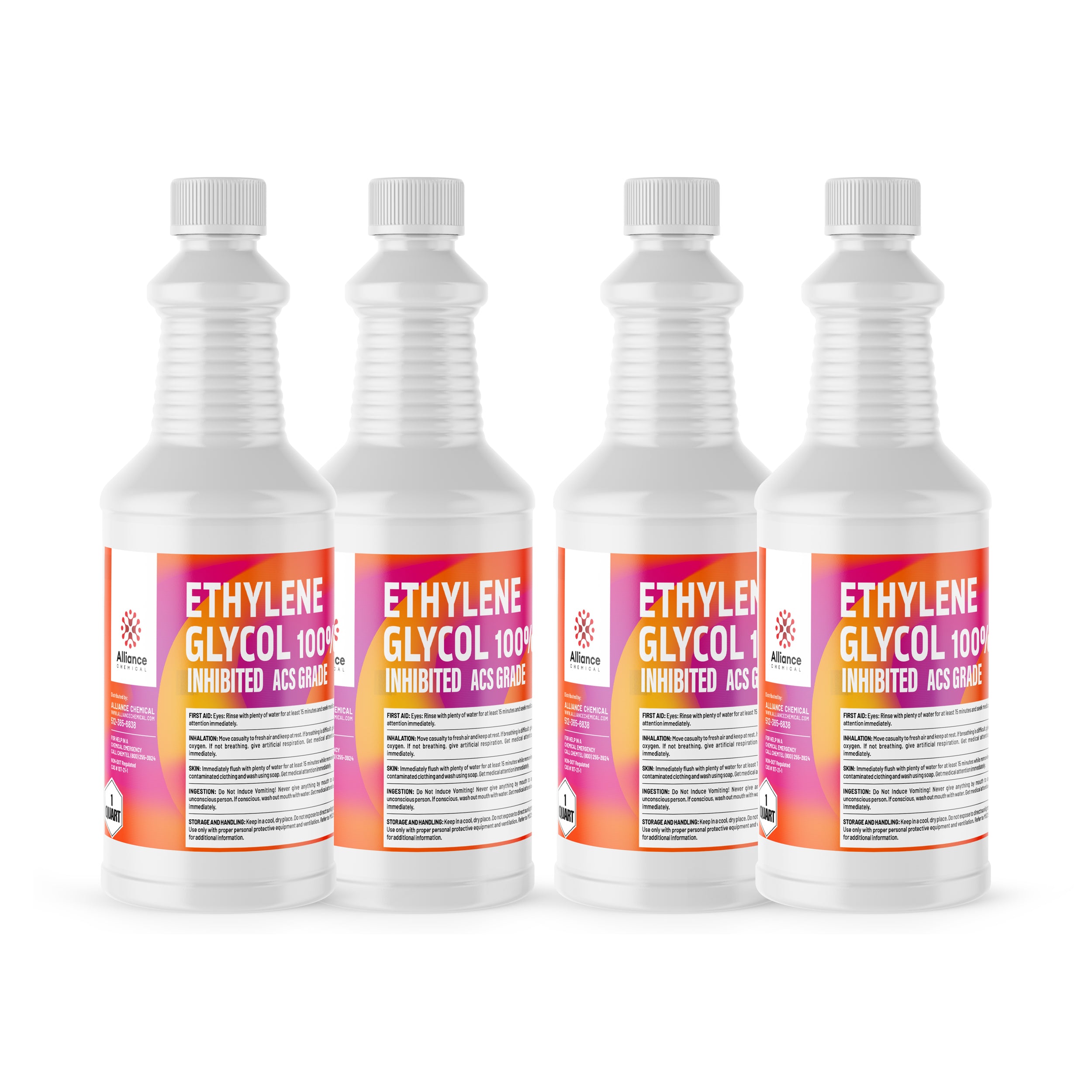
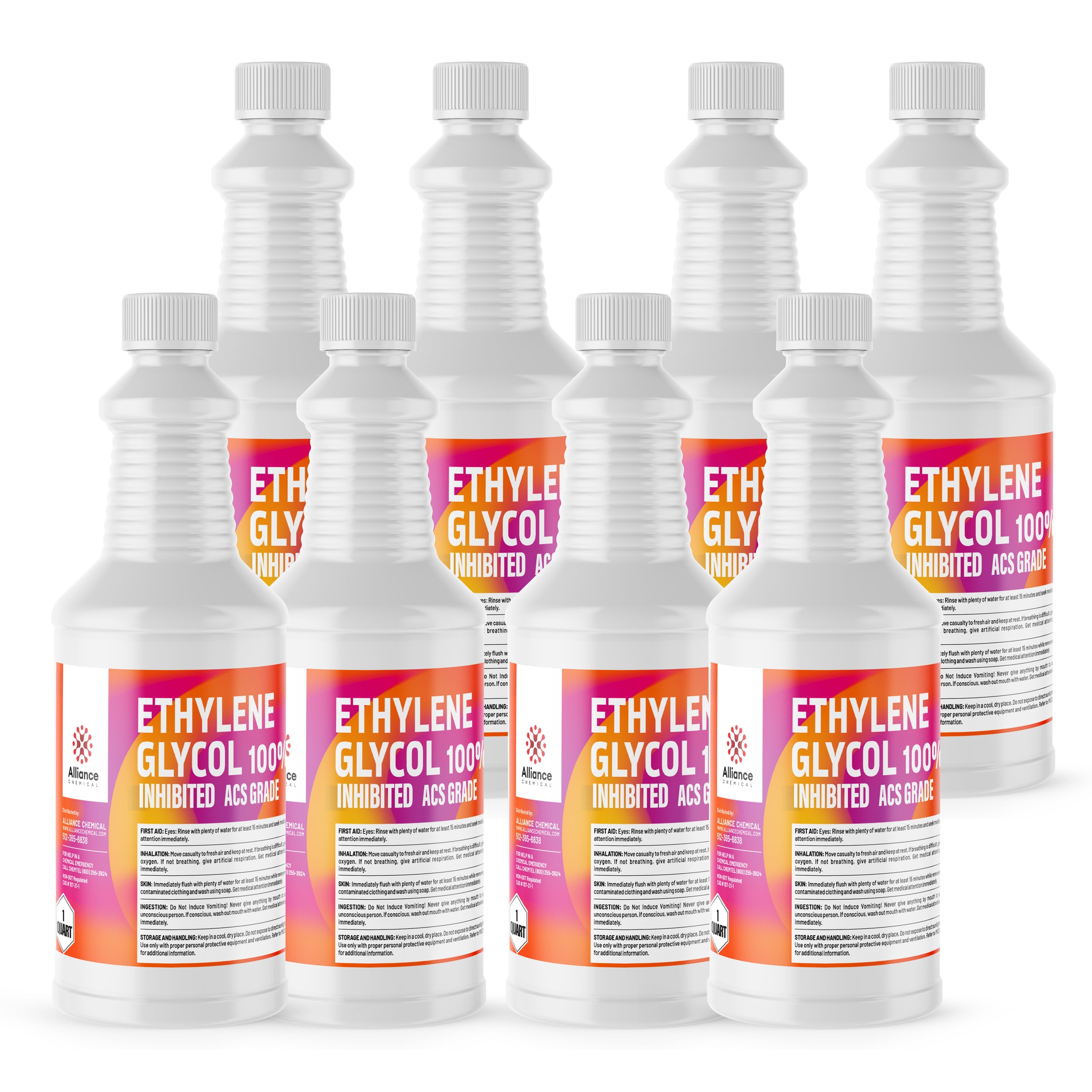
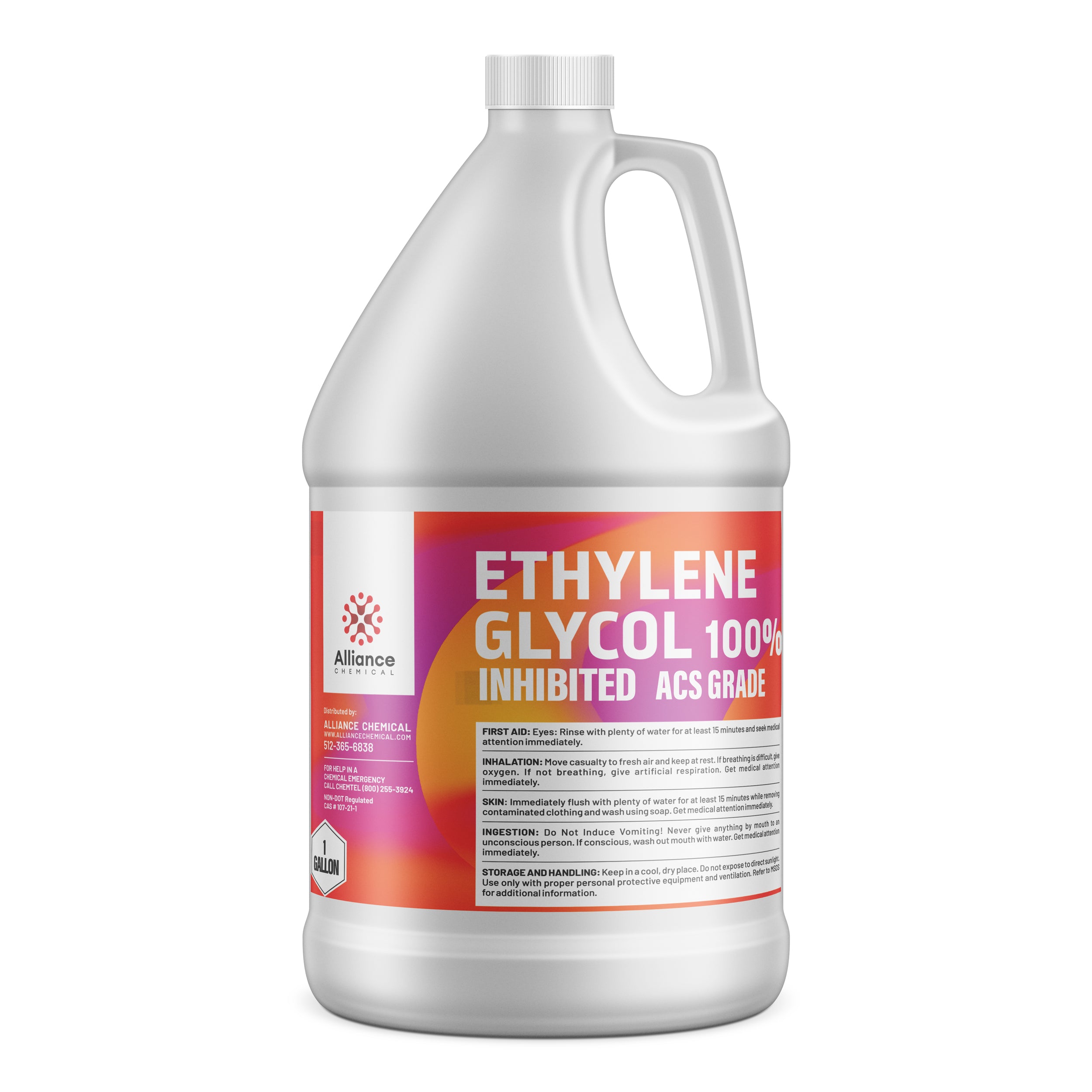
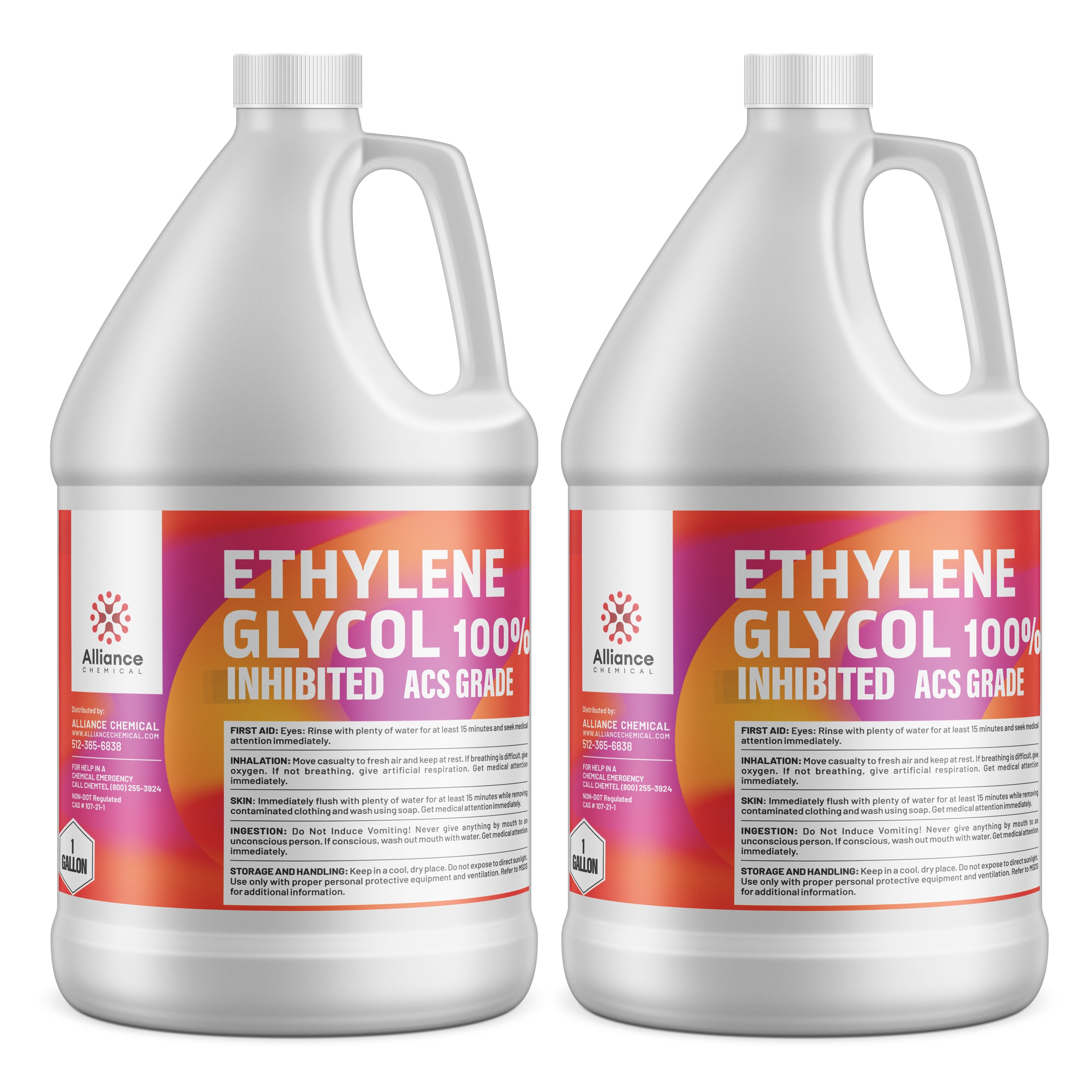
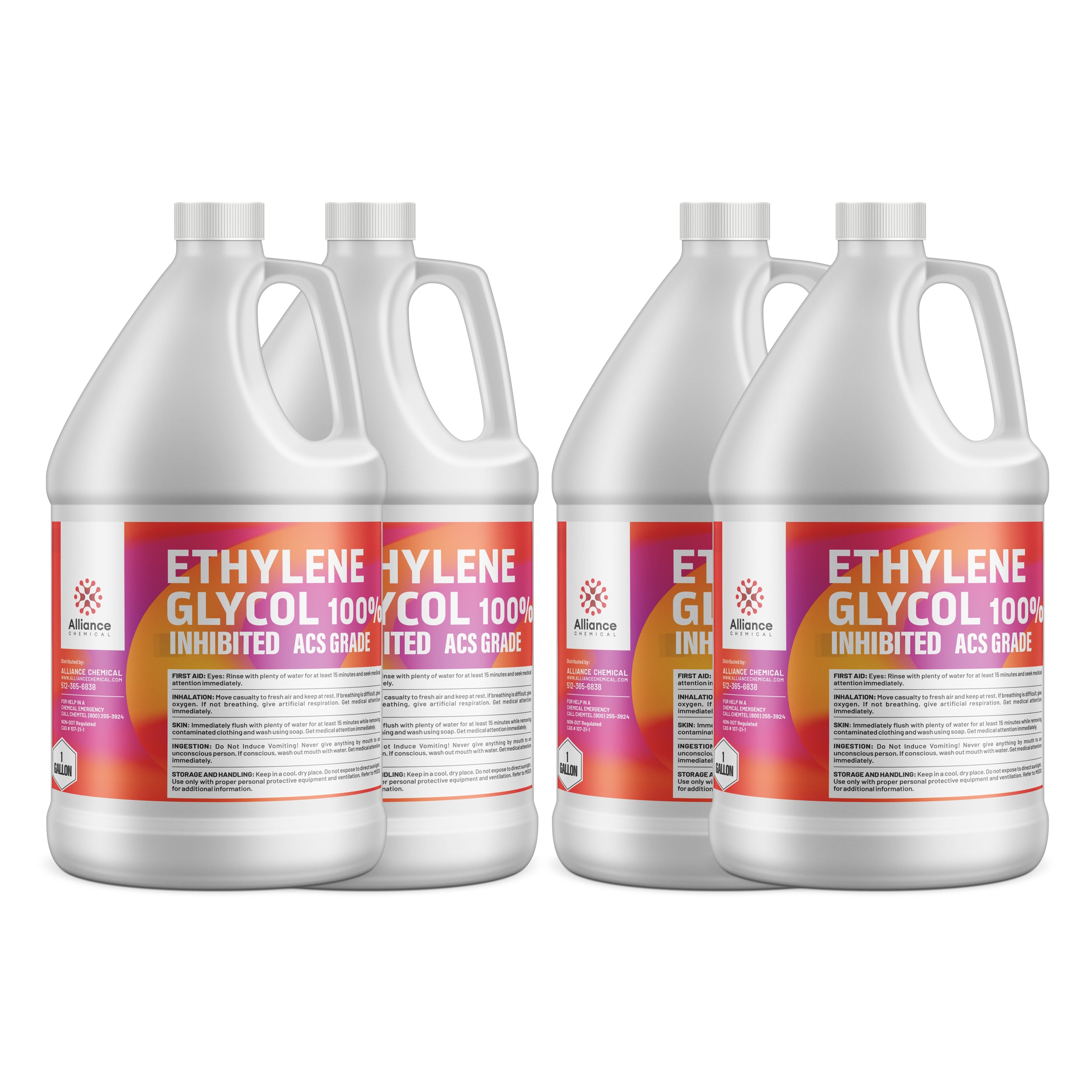
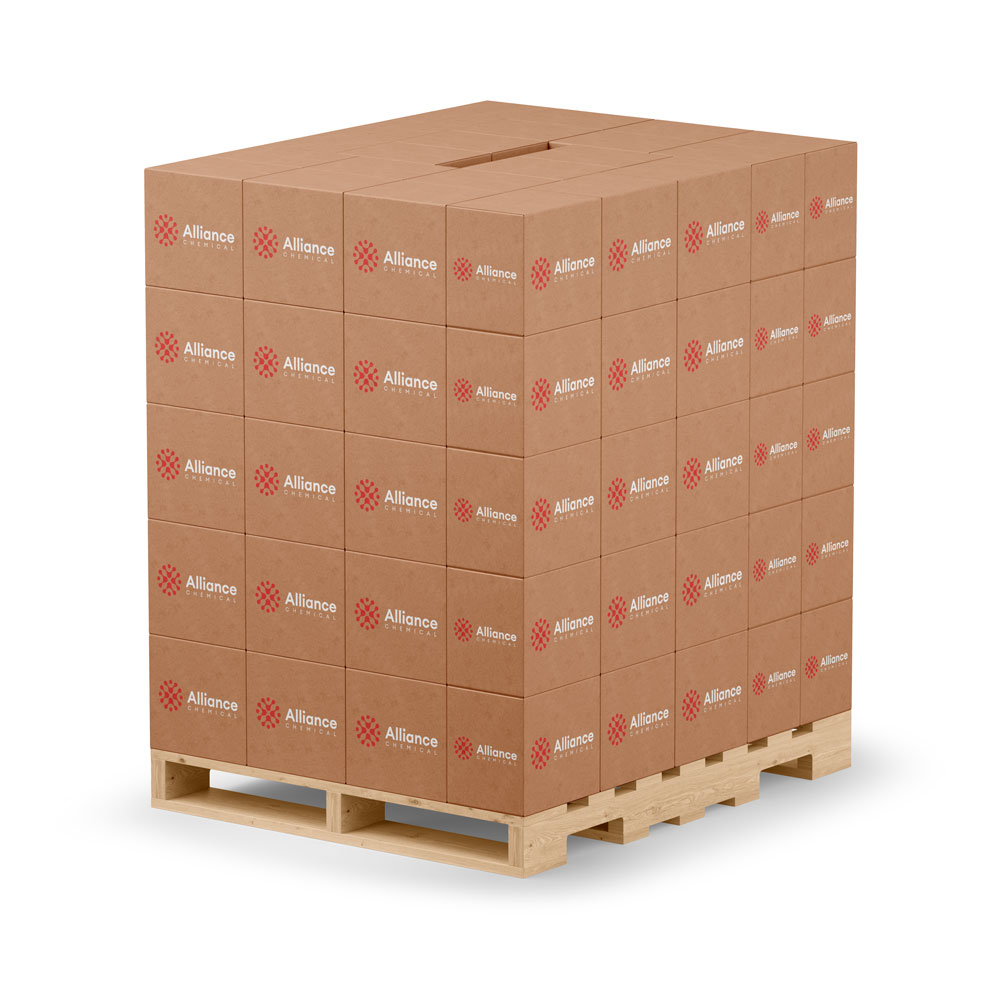
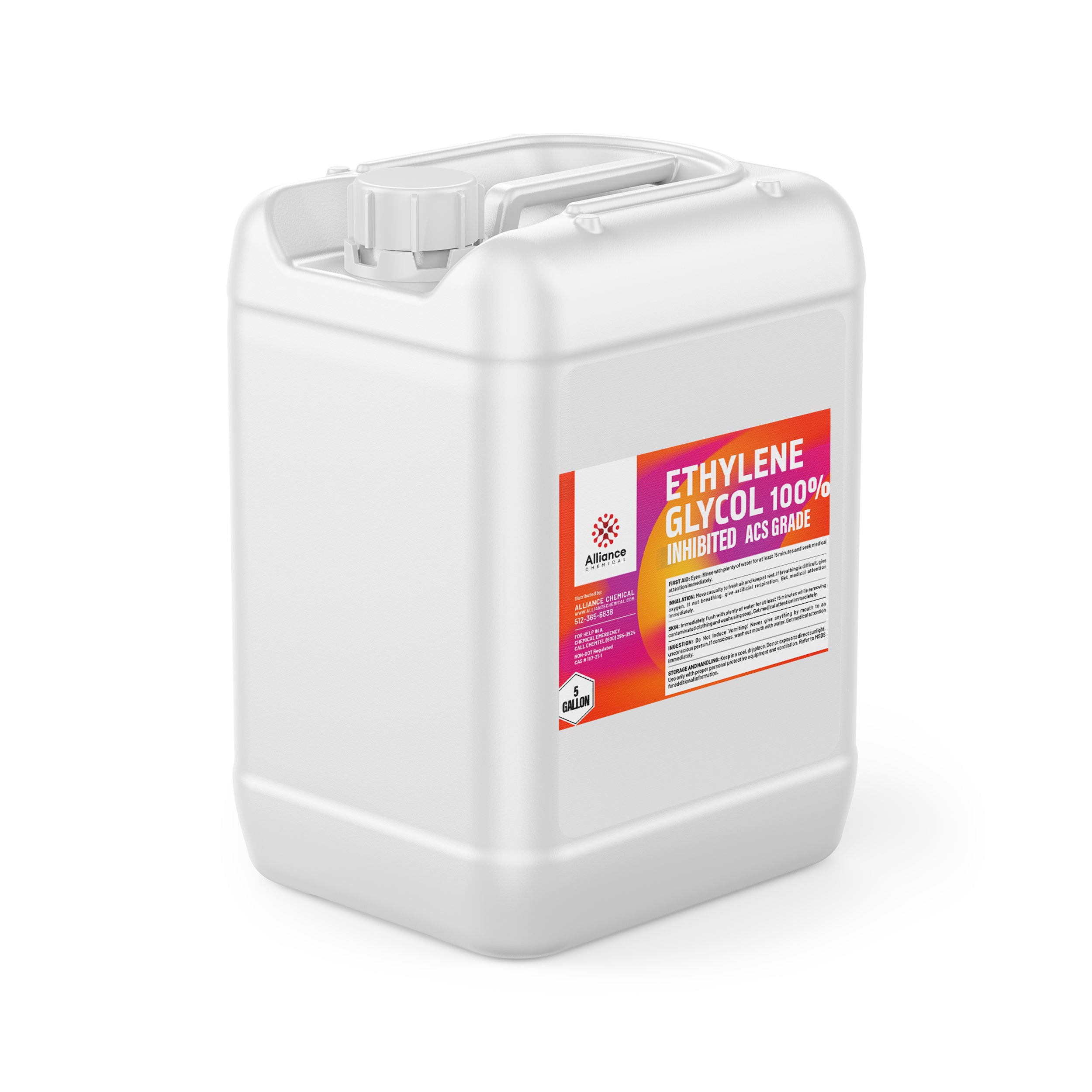
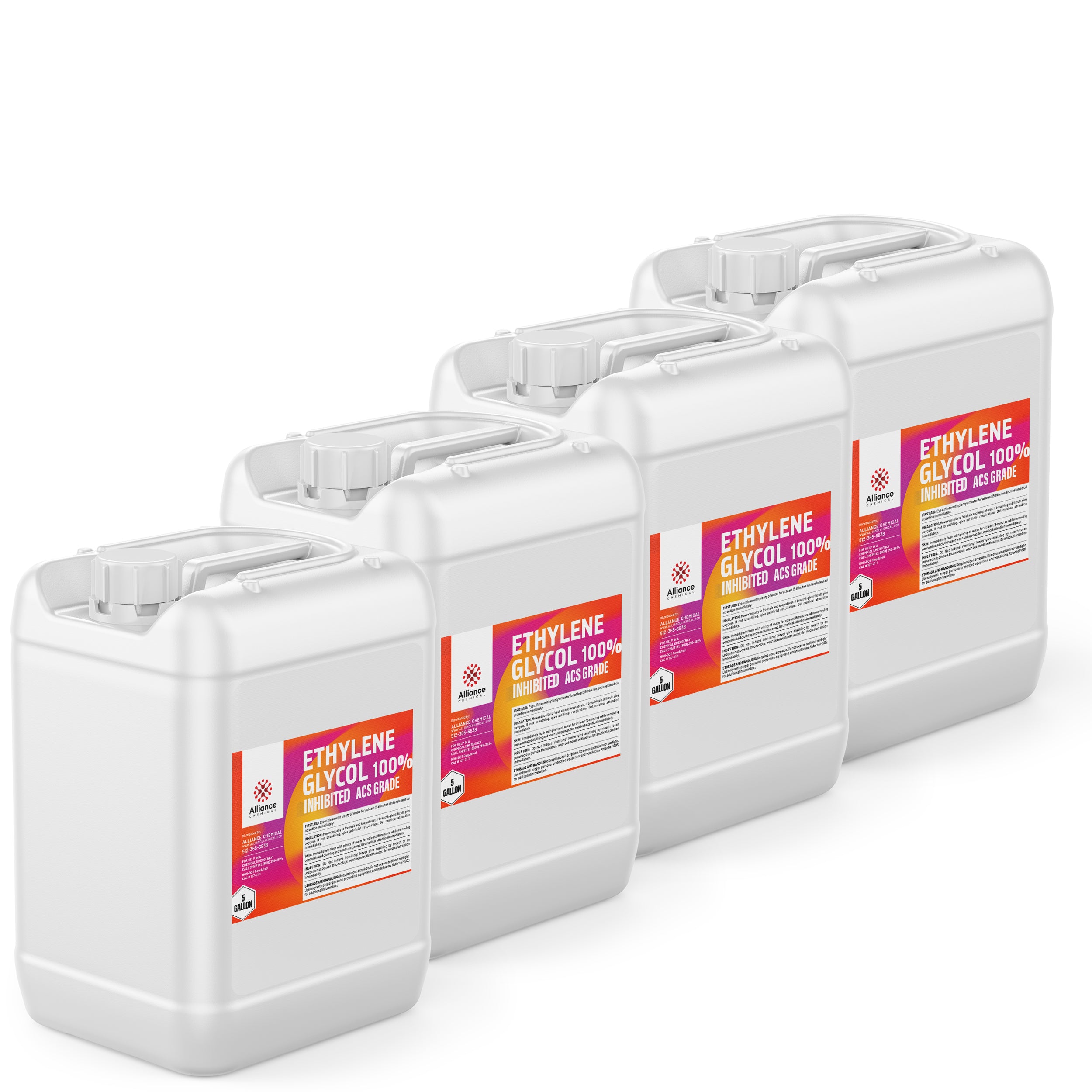
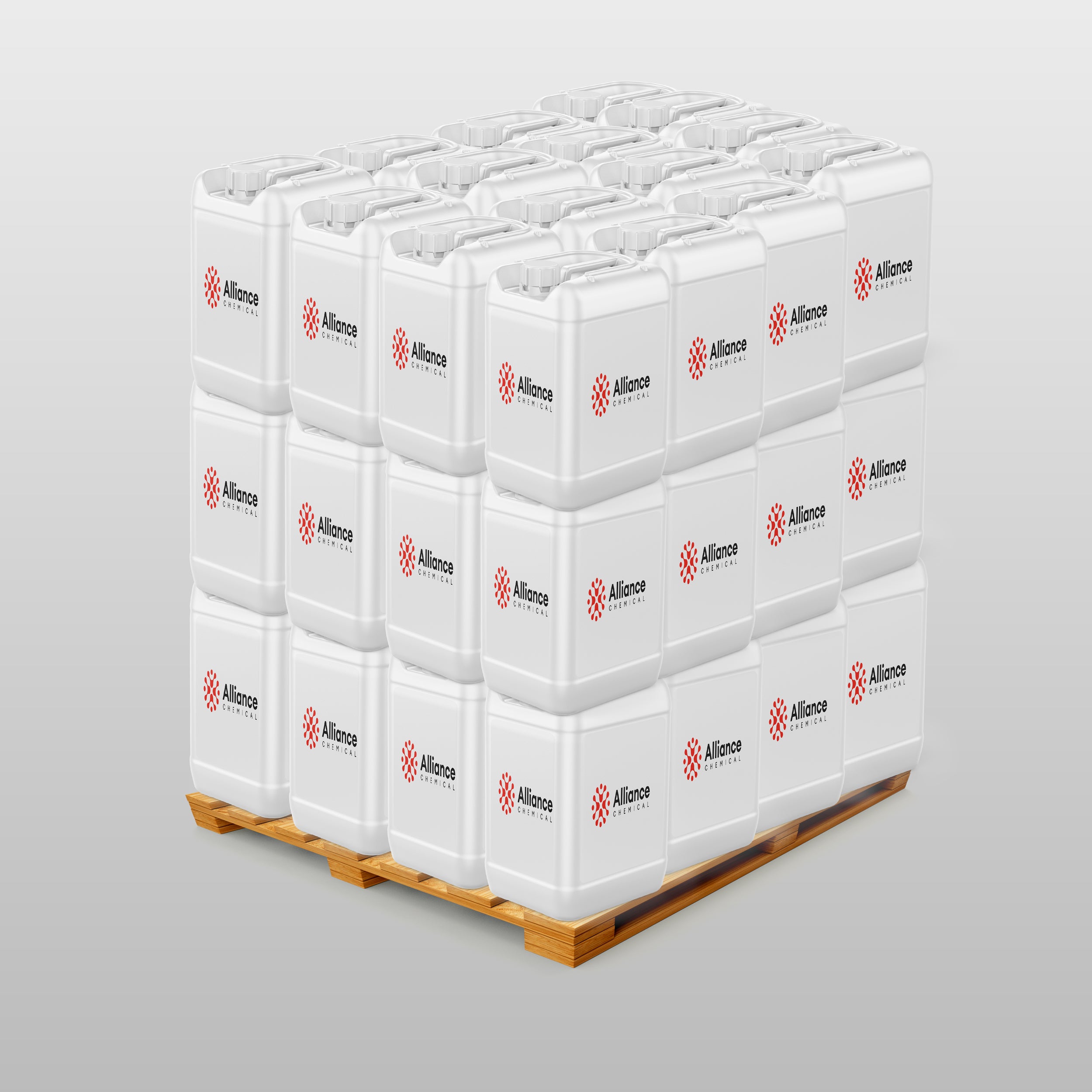
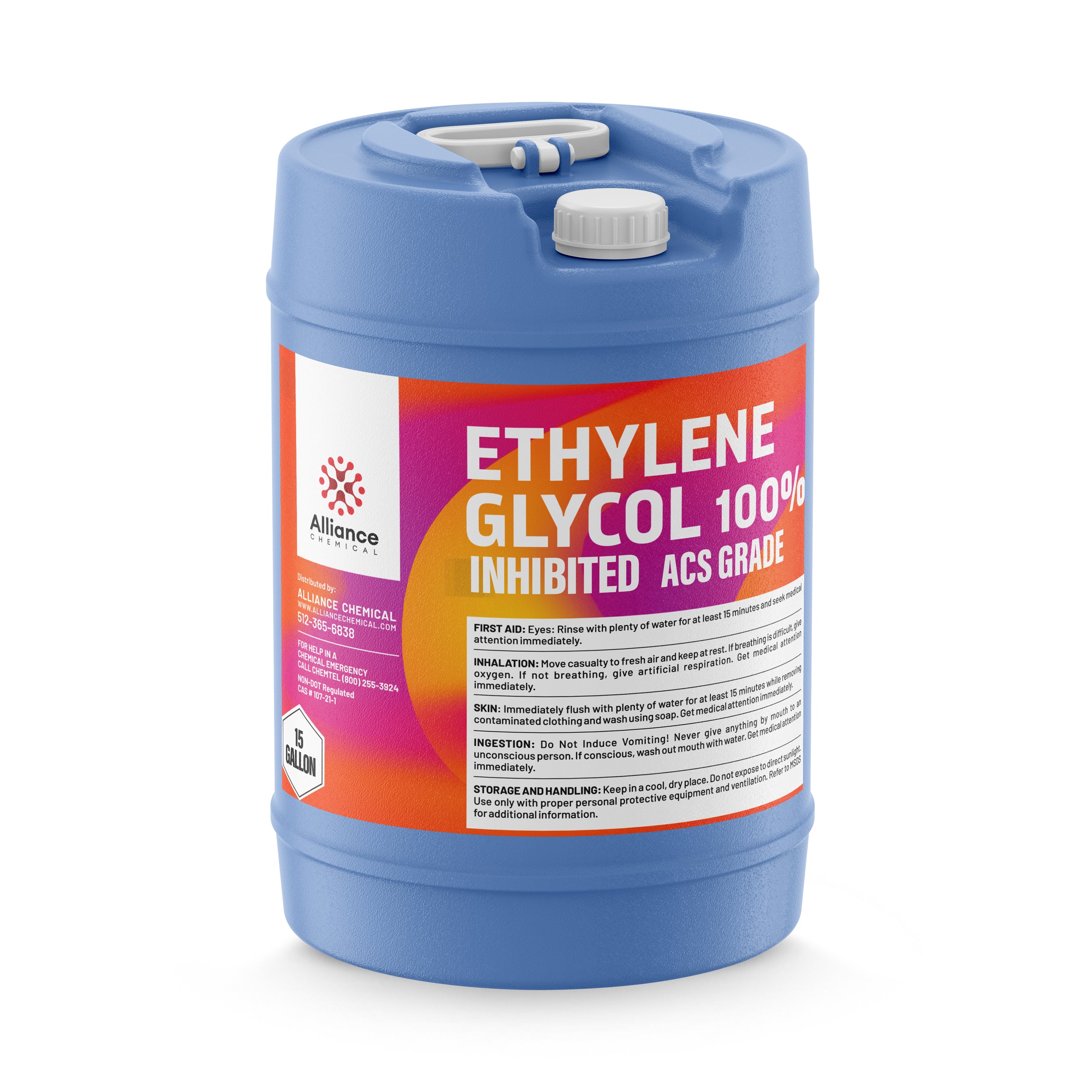
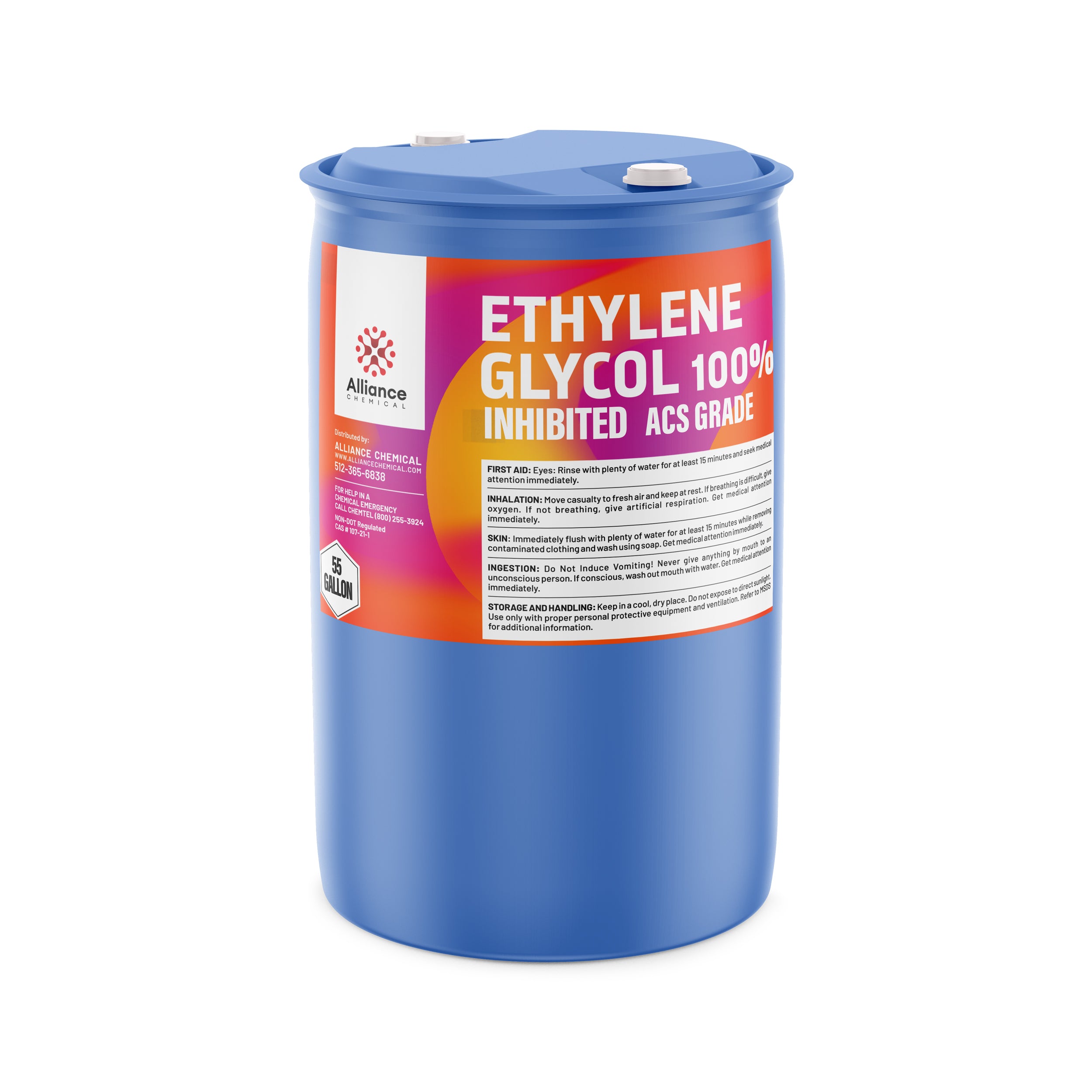
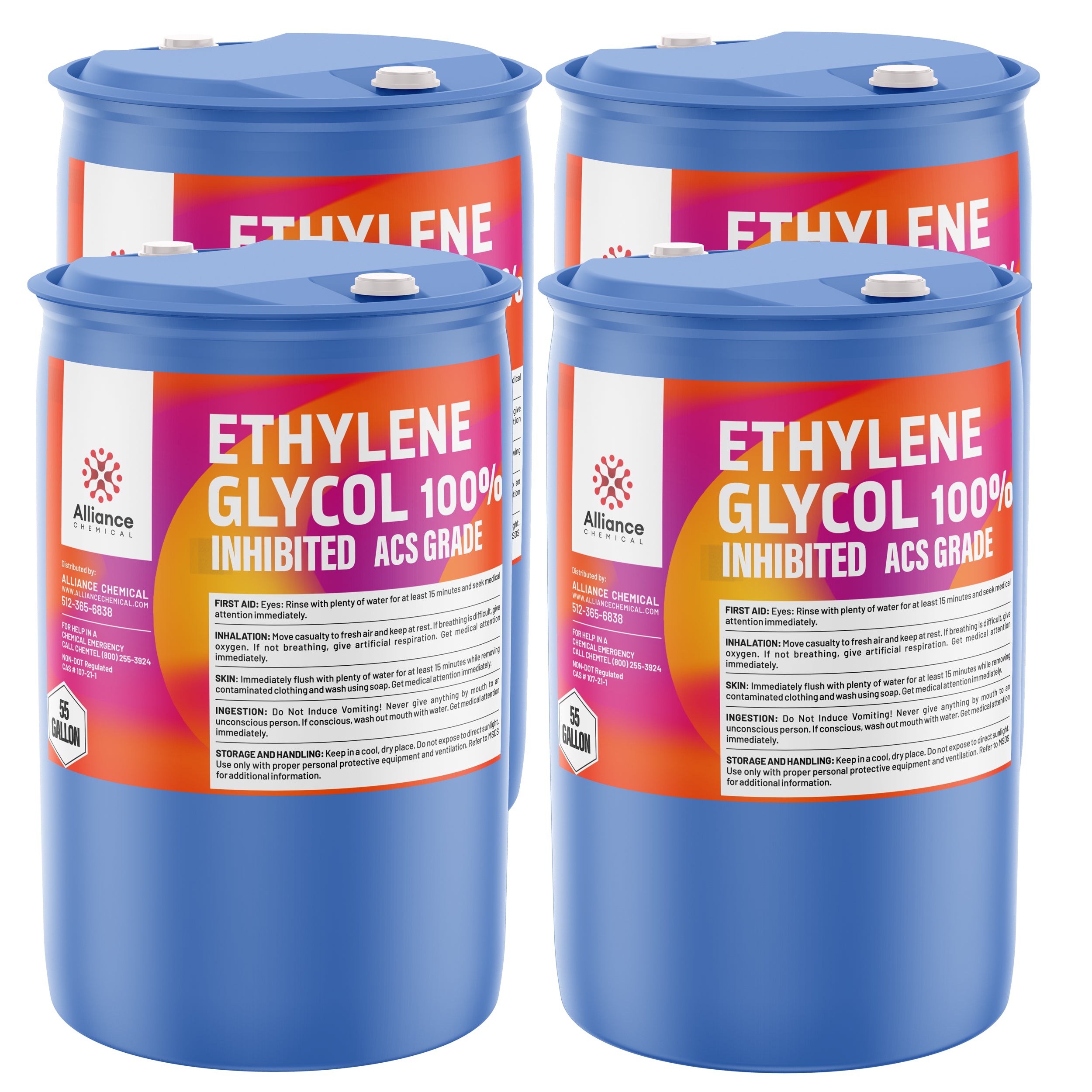
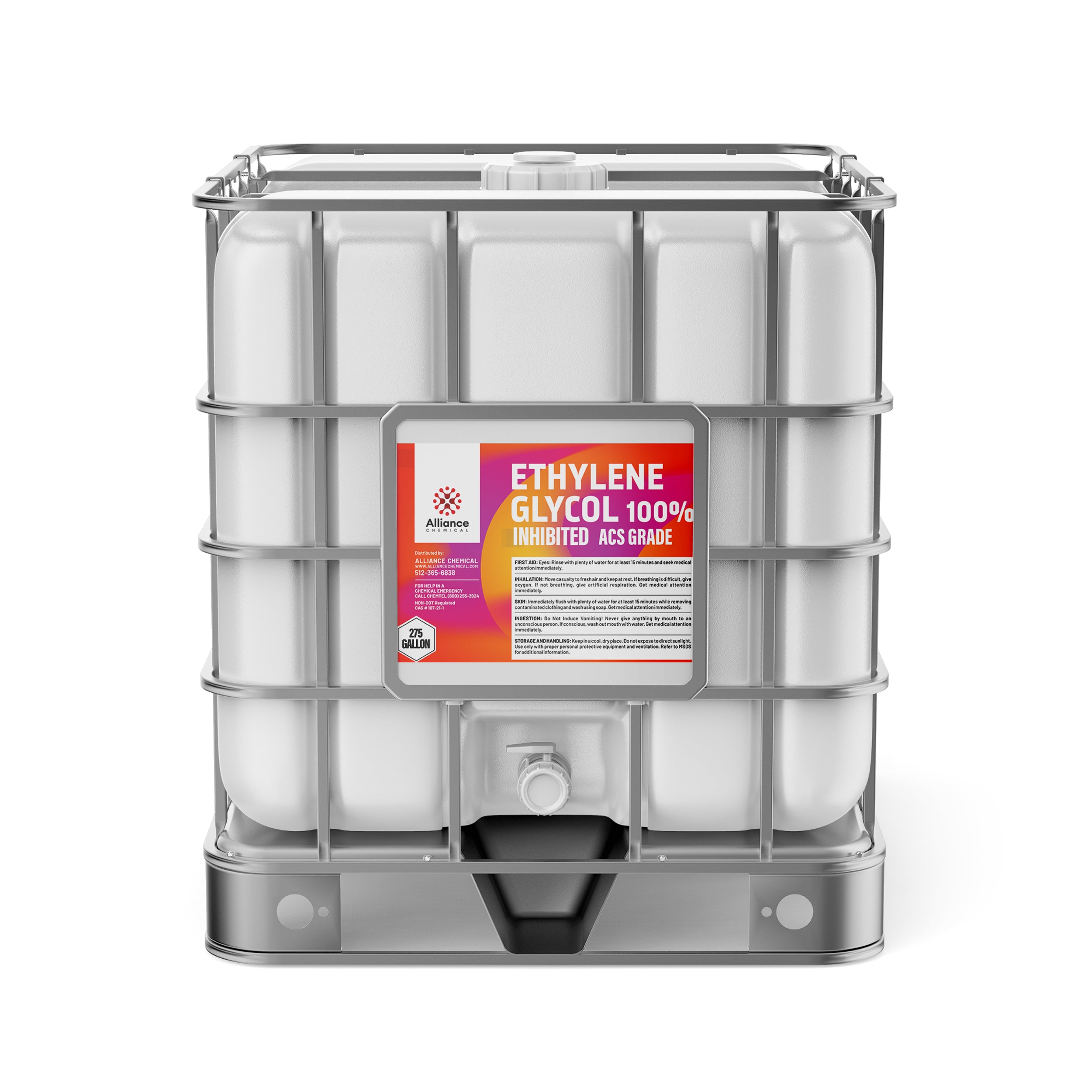
- Description
- Product Documents
Product Overview
Ethylene Glycol Inhibited ACS Grade is a colorless, viscous liquid with a slight, sweet odor. This ACS-grade diol is characterized by a high boiling point and low freezing point, enabling reliable performance as an antifreeze and coolant across automotive, industrial, and laboratory systems. The inhibited formulation minimizes oxidation and degradation, helping to preserve system integrity in long-term use. Its hygroscopic nature supports moisture control in formulations, while its miscibility with water and a broad range of organic solvents facilitates versatile process integration. Typical assay values indicate a purity range of 99.0–100.5 wt%, with very low residual water content (typical ~0.02%, max 0.05%), ensuring minimal dilution in critical applications. The product is maintained under inert conditions to further reduce oxidative effects and maintain consistency with ACS and USP-NF monographs.
In addition to antifreeze and heat transfer roles, Ethylene Glycol Inhibited ACS Grade serves effectively as a solvent in chemical reactions and as a hydraulic fluid in systems requiring a low freezing point and robust thermal stability. Its high density (≈1.113 g/mL at 25°C), refractive index (≈1.433 at 20°C), and moderate viscosity (≈20.1 cP at 25°C) support precise dosing and predictable flow characteristics in engineered environments. This product complies with ACS Reagent Grade and USP-NF Monograph standards, reflecting rigorous quality control, traceability, and reliable performance in demanding industrial settings.
Key Properties
- Property Name: CAS Registry Number
- Chemical Formula: C₂H₆O₂
- Molecular Weight: 62.07 g/mol
- Boiling Point: 197.6°C
- Freezing Point: -12.9°C
- Specific Gravity (Density) at 25°C: 1.113 g/mL
- Refractive Index at 20°C: 1.433
- Viscosity (25°C): 20.1 cP
- Vapor Pressure (20°C): 0.06 mmHg
- Flash Point (C°): 111°C
- Acidity (Meq/g): Max 0.0003 (typical 0.0001)
- Color (APHA): Max 5 (typical 2)
- Residue After Ignition: Max 0.01% (typical 0.005%)
Common Applications
- Antifreeze and Coolant: Automotive industry—prevents freezing and overheating, protecting engine performance and longevity.
- Heat Transfer Fluid: Industrial processes—serves as a high-boiling, low-freezing medium for efficient thermal management.
- Solvent for Chemical Reactions: Chemical manufacturing—acts as a polar aprotic solvent in organic syntheses and reaction media.
- Hydraulic Fluid: Manufacturing—used in hydraulic systems where a low temperature freeze point and high boiling point are advantageous.
- Moisture Absorber: Pharmaceutical formulations—helps maintain moisture control to prevent degradation of sensitive components.
Safety Precautions
Handle with appropriate PPE (gloves, goggles, and protective clothing) in a well-ventilated area. Store in a cool, dry place away from direct sunlight in compatible containers (HDPE or stainless steel). Keep away from strong oxidizers and acids, and ensure proper ventilation during handling to minimize inhalation exposure. Follow established handling procedures and avoid contact with skin and eyes; in case of contact, rinse thoroughly with water and seek medical attention if irritation persists.
In case of exposure, reference the SDS: the product is classified with the hazard statements H302 (Harmful if swallowed) and H373 (May cause damage to organs through prolonged or repeated exposure). Emergency procedures include evacuating the area if large spills occur, using appropriate absorbent materials for containment, and disposing of waste according to local regulations. For skin or eye exposure, flush with water for several minutes and seek medical evaluation; if inhaled, move to fresh air and monitor for symptoms. In the event of ingestion, rinse the mouth and do not induce vomiting; seek medical advice immediately.
Benefits
✔ High Purity ACS/USP Compliance – Meets ACS Reagent Grade and USP-NF monograph standards, ensuring reliability for analytical and preparative workflows.
✔ Low Water Content – Minimal dilution in critical applications; typical water content around 0.02% with a maximum of 0.05%.
✔ Stable Thermophysical Properties – High boiling point, low freezing point, and robust thermal stability suitable for antifreeze, heat transfer, and solvent applications.
| Property | Value |
|---|---|
| Molecular Weight | 62.07 g/mol |
| Formula | C2H6O2 |
| Assay | 100% |
| Grade | ACS |
| Flash Point | 111 |
| Form | Liquid |
| Solubility | Fully miscible with water, polar organic solvents |
| Appearance | Clear, colorless viscous liquid |
| Melting Point | -13 °C |
| Boiling Point | 197 °C |
| Specific Gravity | 1.113 |
| Industry | Industrial, Wastewater, Research |
Other top rated products















TRS-626-0QH
$20.85
Liquid error (snippets/product-blocks line 100): divided by 0
Off
Unit price
/
Shipping Notice: Possible Hazmat Fees
💡 Smart Shipping Tip: Quart & Liter Sizes Often Avoid Hazmat Fees
This size may be classified as hazmat and can incur additional carrier fees. See shipping guide
- ✅ Good news: 1 Quart containers qualify as "Limited Quantity" and bypass hazmat rules
- 💡 Pro tip: Order multiple 1 Quart containers to avoid hazmat fees entirely
- 💰 Hazmat fees can get expensive - especially for larger containers (carrier charges, not our markup)
- 🚚 Ground shipping only - no expedited options for sizes over 1 Qt/1L
Required by 49 CFR § 173.150 for chemical containers larger than 1 quart. Actual fees shown at checkout. View our complete shipping guide →
✅ Great Choice! No Hazmat Fees
1 Quart containers qualify as "Limited Quantity" and avoid hazmat shipping fees.
- 🚀 Faster shipping: Eligible for expedited shipping options including air transport
- 💰 No hazmat fees: Ships as "Limited Quantity" per DOT regulations
- 📦 Convenient size: Perfect for testing or smaller applications
- ♻️ Smart choice: Order multiple quarts to get the volume you need without hazmat charges
Exempted under 49 CFR § 173.150 Limited Quantity provisions for containers ≤1 liter/quart. Learn more in our shipping guide →
Size:
Variation:
-
$20.85Delivery every$19.81
-
$27.06Delivery every$25.71
-
$36.29Delivery every$34.48
-
$50.58Delivery every$48.05
-
$40.07Delivery every$38.07
-
$61.05Delivery every$58.00
-
$99.55Delivery every$94.57
-
$3,028.78Delivery every$2,877.34
-
$152.74Delivery every$145.10
-
$580.18Delivery every$551.17
-
$4,118.31Delivery every$3,912.39
-
$373.52Delivery every$354.84
-
$1,044.84Delivery every$992.60
-
$3,320.60Delivery every$3,154.57
-
$3,824.31Delivery every$3,633.09
Compare Products
| Price |
|---|
| SKU |
| Rating |
| Discount |
| Vendor |
| Tags |
| Weight |
| Stock |
| Short Description |
